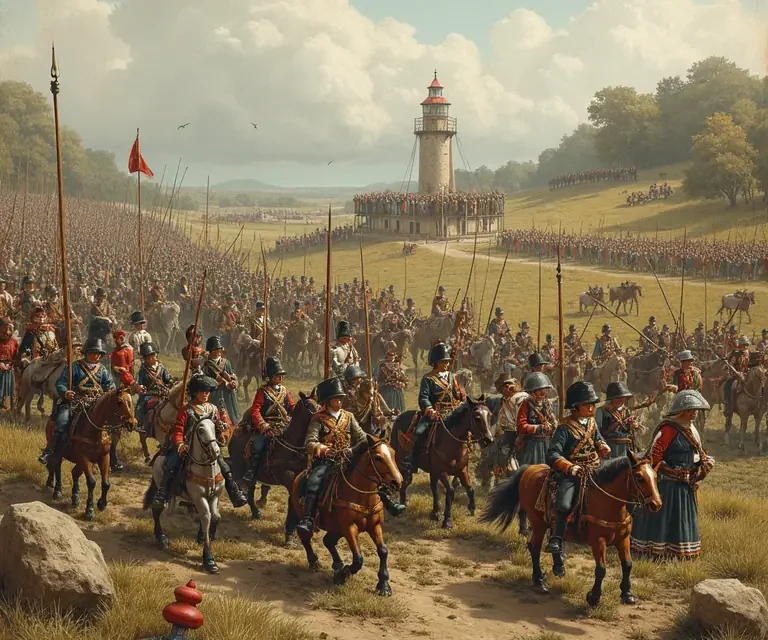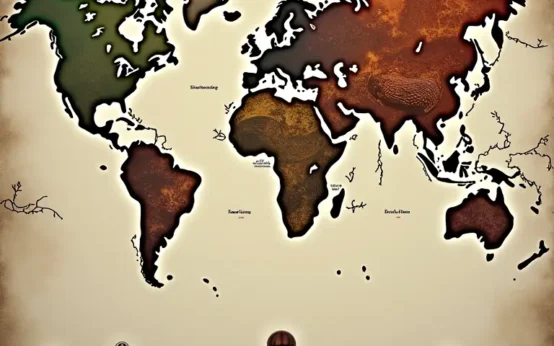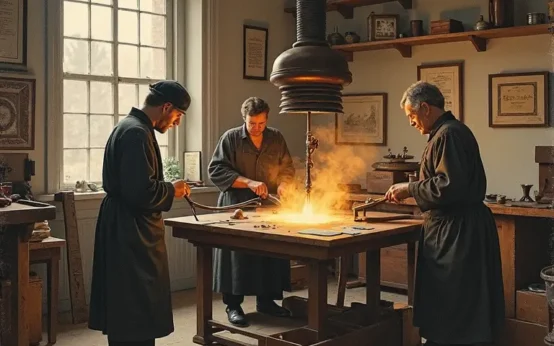Toy soldiers. The very phrase conjures images of childhood, wargaming, and perhaps even a touch of nostalgia. But beneath the surface of these diminutive figures lies a surprisingly rich history, interwoven with developments in materials science, manufacturing techniques, military strategy, and even the psychology of play. This article delves into the fascinating world of toy soldiers, exploring their evolution from rudimentary materials to sophisticated collectibles, and examining the consistent scientific principles that have underpinned their creation and enduring appeal.
Early Origins: From Stone and Clay to Lead
The concept of miniature representations of soldiers dates back millennia. Archaeological evidence suggests that ancient civilizations, including the Egyptians and Romans, crafted small figurines representing warriors – though these were often more akin to religious idols or status symbols than toys in the modern sense. These early figures were typically made from materials readily available: stone, clay, bone, and occasionally wood. However, the true precursor to the modern toy soldier emerged in the medieval period, with the creation of tin soldiers.
Tin, while relatively soft, was malleable and easier to cast than stone or wood. As tin production increased, so too did the creation of small, soldier-like figures. However, it was the discovery of economical methods to alloy tin with lead, starting in the 17th century, that truly revolutionized the production of toy soldiers. Lead’s low melting point, relative softness, and ease of casting made it the ideal material. Early lead soldiers were often crudely made, hand-painted, and used by adults for military training exercises – essentially, tabletop war games. These weren’t child’s play initially; they were tools for strategists.
The Rise of Mass Production: Lead’s Golden Age (18th-19th Centuries)
The 18th and 19th centuries witnessed the ‘golden age’ of lead toy soldiers. Advances in casting techniques, particularly the development of two-part molds, allowed for greater detail and, crucially, mass production. William Britain, Jr., founded in 1892, became the dominant force in the toy soldier industry, pioneering hollow casting. This technique significantly reduced the amount of lead required for each figure, lowering costs and making toy soldiers more accessible. Britain’s soldiers weren’t just toys; they were highly detailed representations of British soldiers, meticulously researched and accurately painted, often mirroring contemporary uniforms and equipment.
The scientific principles at play here are primarily related to materials science and metallurgy. The lead-tin alloy’s composition dictated its casting properties – the ratio of lead to tin impacted the figure’s durability, paint adhesion, and level of detail achievable. The hollow casting process, while seemingly simple, relied on precise mold design and temperature control to ensure consistent wall thickness and prevent warping. The paints used were also subject to scientific scrutiny; early pigments were derived from natural sources, with varying degrees of stability and toxicity. The evolution of paint chemistry, with the introduction of synthetic pigments, improved color vibrancy and longevity.
The Shift to Composition and Plastic: Safety and Affordability
While lead soldiers reigned supreme for over a century, concerns about lead toxicity began to emerge in the early 20th century. This, coupled with the rising cost of lead and disruptions caused by the World Wars, spurred a search for alternative materials. The first major shift came with the introduction of ‘composition’ figures, typically made from a mixture of papier-mâché, glue, and sawdust. These were lighter, cheaper, and non-toxic, but lacked the detail and durability of lead.
The true revolution, however, arrived with the advent of plastics. Initially, cellulose acetate was used, but it proved brittle and prone to cracking. The development of polyvinyl chloride (PVC) and, later, polyethylene, offered superior durability, flexibility, and affordability. The post-World War II era saw a massive influx of plastic toy soldiers, particularly from companies like Marx Toys and Britain (who eventually transitioned to plastic as well). The transition wasn’t just material-based; it required a complete overhaul of manufacturing processes. Injection molding, a process that involves injecting molten plastic into a mold, became the dominant production method. This allowed for incredibly high-volume production and intricate details, albeit with a different aesthetic than lead figures.
The science behind plastic toy soldiers is complex, involving polymer chemistry, material engineering, and process optimization. The specific type of plastic used determines the figure’s strength, flexibility, and resistance to degradation. Injection molding requires precise control of temperature, pressure, and cooling rates to ensure consistent quality. The development of different plastic formulations, with additives to enhance color, UV resistance, and impact strength, continues to this day.
The Physics of Play: Wargaming and Collective Interaction
Beyond the materials science, the enduring appeal of toy soldiers lies in the physics of play and the social dynamics they facilitate. Wargaming, the practice of simulating military battles using miniature figures, taps into fundamental human desires for strategic thinking, problem-solving, and creative storytelling. The rules of wargames, whether simple or complex, introduce a layer of mathematical probability and tactical analysis. Players must consider factors such as terrain, troop movement, firepower, and morale to achieve victory.
The consistent scale of toy soldiers (typically 1:72, 1:32, or 28mm) is crucial for maintaining realistic proportions and facilitating gameplay. This adherence to scale reflects a deep understanding of geometric similarity and the principles of dimensional analysis. Furthermore, the weight and balance of the figures impact their stability and ease of manipulation during play. A poorly balanced figure is more likely to topple over, disrupting the game and frustrating the player.
The collective aspect of play is also significant. Wargaming often involves multiple players, fostering social interaction, negotiation, and collaboration (or competition!). The shared narrative created through gameplay strengthens social bonds and encourages imaginative thinking. The very act of arranging and maneuvering the figures on a tabletop battlefield is a physical manifestation of strategic thought, and the tactile experience enhances engagement.
Paint and Finish: Chemistry and Aesthetics
The painting of toy soldiers is an art form in itself, but it’s also deeply rooted in chemistry. Early paints were often oil-based, requiring solvents for thinning and cleaning. The development of acrylic paints revolutionized the hobby, offering water-based, non-toxic alternatives with vibrant colors and excellent adhesion. The chemistry of pigments determines their color, opacity, and lightfastness. Modern hobby paints incorporate a range of additives to improve flow, leveling, and durability.
The application of finishes, such as varnishes and washes, further enhances the aesthetic appeal and protects the paint from damage. Varnishes create a protective layer, while washes accentuate details and create a sense of depth. The choice of finish impacts the figure’s overall appearance and tactile feel.
Collecting and Preservation: Material Degradation and Conservation
For collectors, the preservation of toy soldiers is paramount. However, all materials are subject to degradation over time. Lead soldiers can oxidize, forming a dull gray patina. Plastic figures can become brittle, discolored, or warped. Understanding the mechanisms of material degradation is crucial for effective conservation.
Lead oxidation can be slowed by controlling humidity and exposure to air. Plastic degradation can be mitigated by storing figures away from direct sunlight and extreme temperatures. Conservation techniques, such as gentle cleaning and the application of protective coatings, can help to stabilize fragile figures and preserve their historical value. The science of conservation draws upon principles of chemistry, materials science, and art history.
The Enduring Legacy: From Toys to Historical Artifacts
Toy soldiers are more than just playthings. They are tangible links to the past, reflecting evolving military technology, social customs, and artistic styles. They offer a unique window into the history of warfare, manufacturing, and childhood. The consistent scientific principles that have underpinned their creation – from the metallurgy of lead alloys to the polymer chemistry of plastics – demonstrate the enduring power of human ingenuity.
Today, toy soldiers continue to be popular among collectors, hobbyists, and wargamers. The hobby has evolved, with the emergence of new materials, technologies (like 3D printing), and gaming systems. However, the fundamental appeal remains the same: the opportunity to engage with history, strategy, and creativity in a miniature world.
Further exploration into the consistent scientific principles across historical artifacts can be found in articles on other collectibles:
- The Surprisingly Consistent Science of Antique Lockpicking Tools
- The Surprisingly Consistent Science of Historical Boarding Schools
- The Unexpectedly Consistent Science of Vintage Postcard Design
- The Surprisingly Consistent Science of Vintage Board Game Packaging
- The Surprisingly Consistent Science of Antique Sundials


 The Curious Acoustics of Historical Echo Chambers: Resonance, Ritual, and Revelation
The Curious Acoustics of Historical Echo Chambers: Resonance, Ritual, and Revelation  The Curious Cartography of Scent: Mapping Perfume Ingredients Through History
The Curious Cartography of Scent: Mapping Perfume Ingredients Through History  The Curious Lexicon of Lost Trades
The Curious Lexicon of Lost Trades  The Surprisingly Consistent Science of Historical Ice Harvesting – A Frozen History of Commerce & Preservation
The Surprisingly Consistent Science of Historical Ice Harvesting – A Frozen History of Commerce & Preservation  The Unexpectedly Consistent Science of Historical Buttonhooks – Fashion, Function & Forgotten Tools
The Unexpectedly Consistent Science of Historical Buttonhooks – Fashion, Function & Forgotten Tools  The Surprisingly Consistent Etymology of Place Names – Uncovering Stories in Street & Town Origins
The Surprisingly Consistent Etymology of Place Names – Uncovering Stories in Street & Town Origins